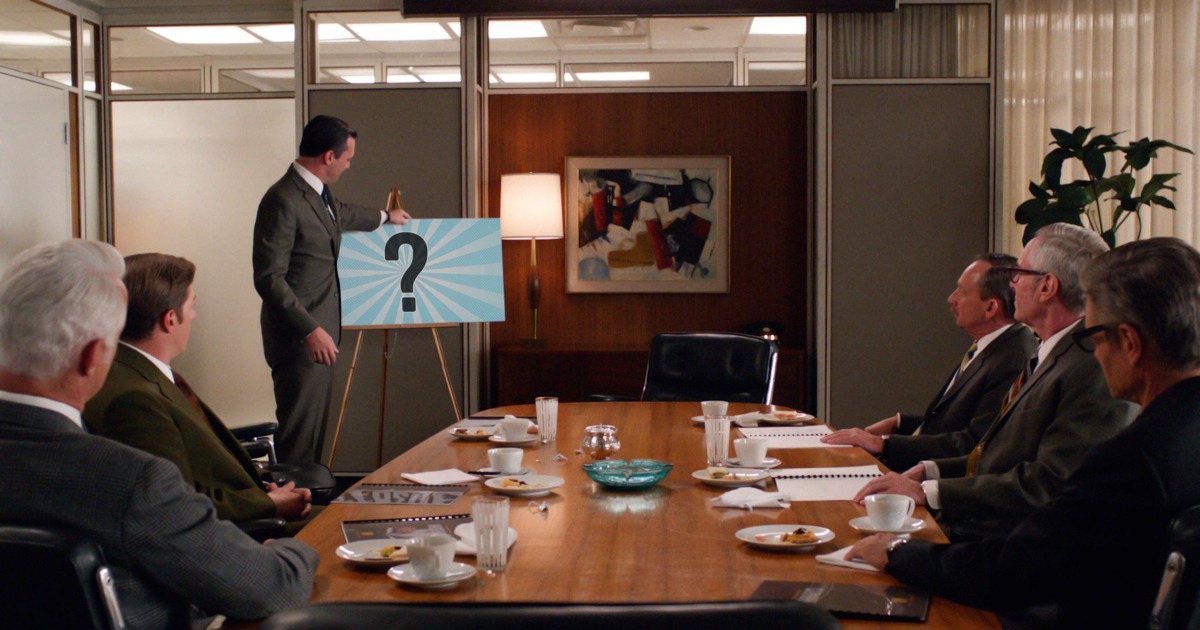In a design pitch, no one wins
A design pitch, (also known as spec work) is a very, very bad idea.

After a week with three individual clients requesting an upfront, unpaid design pitch, we decided to write a blog post why we think design pitches are a very bad idea.
To clarify, we refer to the following definition:-
A design pitch is a request from a potential client to sample the vendor’s work before deciding on a business agreement.
The pitch would require the vendor to present mockups for a design solution together with their service proposal. This is usually unpaid labour.
We’re not the first to write about pitch practice, and that in itself is a signal: an (unpaid) design pitch is not only not normal, it is terrible for your project and the design industry.
What reasons do clients have asking for a free design pitch?
As we still receive a fair number of requests for this, and we usually ask our clients why they want one, so we are quite familiar with the reasons clients have for wanting one. We have summarised the 4 most common ones, provide our key reasons why we think they are a bad idea and provide a better alternative.
1. We need to evaluate your design capabilities.
We often hear this. Of course you should be able to evaluate your options. The problem is that if you’re assessing a vendor’s design capabilities, a design pitch is not how you do it.
A good design does not just look the part, but actually works well. Any good designer’s mantra is: “Design solves a predetermined problem”. And in order to solve that problem we must understand what the problem is.
That means interviewing your project’s team members, to find out what kick-started this project. It means observing customer behaviour to find out what really works and what doesn’t; it means analysing your company’s values and operations, to see how that solves your customers’ problems.
A lot of wild guesses.
But your vendor doesn’t get to do any of these things, and therefore they need to make a lot of wild guesses, hoping to land a few good ones and make a reasonably good impression. On top of that, they’re doing it for free while they could be working on an actual paid job.
If you are evaluating a vendor’s design capabilities based on their uninformed, free design pitch, you are getting at best a aesthetically pleasant image to look at; at worst, a transparent attempt to curry favour with you by presenting what you might want to see.
What you won’t get, is to accurately determine the best vendor who can help you create a great solution to a set number of challenges you’ve identified together.
If we had to paint an analogy, the design pitch process would not be dissimilar to hiring staff based on a photo. Probably ok if you’re hiring a model; insensitive if you’re not.
2. Our management requires it – this is the only way we can get them involved in the vendor selection process.
This may come as a shocker, but sometimes even your management is wrong.
Unless we’re designing an exclusive C-level intranet, we’re most likely not designing with your CEO in mind. We focus on your users instead, who have heaps of worries and concerns of their own and probably need all the help they can get.
If your management wants to look at good-looking stuff your vendor has done, we’re be happy to show them previous work. Our own portfolio has tonnes of real-life, implemented designs (often under influence of many necessary constraints such as guidelines, budget, timeline and client feedback) that have been tested and proven to solve problems. We can explain in detail which choices have been made and why. Sure, this work may be harder to relate to from your perspective. However, this is real work yielding real results your management can evaluate us on.
We can’t speak for other agencies, but we’d even invite you to contact our previous clients and hear them out.
You’re choosing us as much as we’re choosing you.
If doing a beauty contest lineup is your management’s idea of evaluating a vendor, we’d probably not make a good couple in the first place. A successful project means successfully working together, using each other’s skills and strengths by forming a bond between all the team members. If we can’t get along on basic design principles, unless someone is willing to change their mind, it’s going to be a tough ride…
3. You should be willing to invest some time in us, so we can see if you understand us.
When a prospective project is worth their effort, any good vendor will be eager to invest time in a project before they get paid for their services. Scoping out technical requirements, understanding the clients’ needs, collecting the necessary solutions, preparing a proposal and presenting it, drafting a contract; it all does actually cost quite a bit of time.
Surprisingly, creating an upfront design option would require not nearly as much time as some of the other things mentioned above. The problem comes back to the same thing again.
It’s beautiful… What is it?
Because we don’t know enough about your situation and constraints, we’ll be designing in a vacuum. So we can easily spend a few hours to make an awesome-looking landing page design which follows the latest design trends, but that design most probably only looks good, and will make your actual users very unhappy.

Visually stunning layout, but we’ve absolutely no idea what we’re looking at, let alone what problem it solves. (Image via Dribbble by Eddie Lobanovskiy)
4. How else can we evaluate you?
Great question. How would you hire an accountant or a lawyer? Do you ask them to do a a year of P&L accounts at no cost? Or present a hypothetical legal issue so your potential lawyer can work on it?
In other words, does this sound like normal practice:-
Probably not.
You evaluate these types of vendors on other criteria, like experience, work process, references (happy or unhappy clients) and pricing. That would work pretty well for our industry as well. As an added bonus, you get see the exact work we’ve delivered to our clients — which might be hard for an accountant or a divorce lawyer.
Ok, we understand. So what do you need from us?
Great question! An open-ended request for proposal (RFP) is a good start. A face-to-face meeting before we submit our proposal will greatly increase your chances of getting an accurate quote.
And believe it or not: providing an upfront budget is super helpful. This allows your vendor to tailor solutions to whatever you’re willing to part with. They can also respectfully decline if the project scope is out of their comfort zone, saving everyone time.
Final thoughts
If your organisation requested spec work recently, you’re not alone: organisations large and small tend to ask for this. Lack of experience combined with common practices in the advertising industry has resulted in this persistent and infamous request.
This would no longer be an issue if all agencies and freelancers would say no to spec work; unfortunately that is not realistic. Our best bet is that project owners become more aware of best practices when requesting proposals, by educating them that it’s in no one’s best interest to request spec work. Because design is not a beauty contest.
